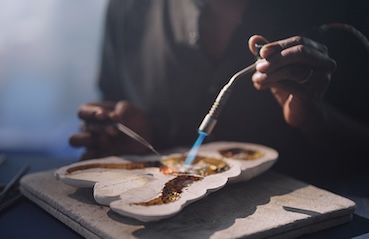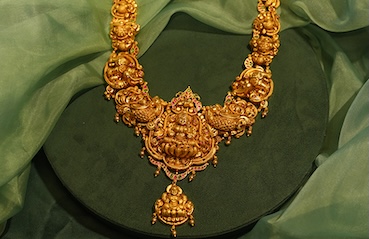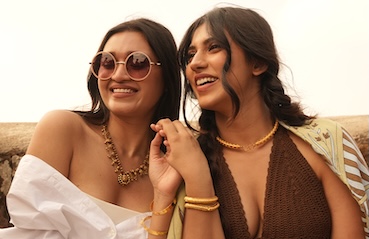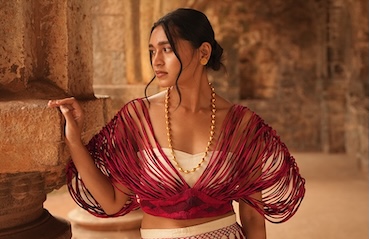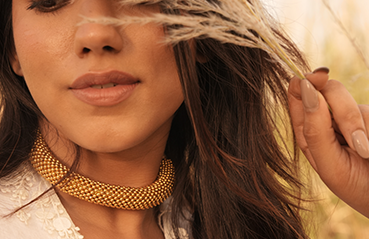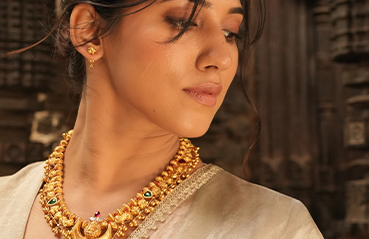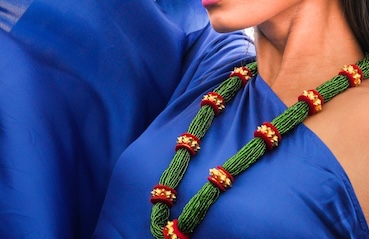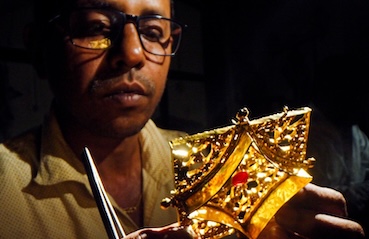Published: 29 Apr 2024
Fascinating Sikkimese Jewellery Designs
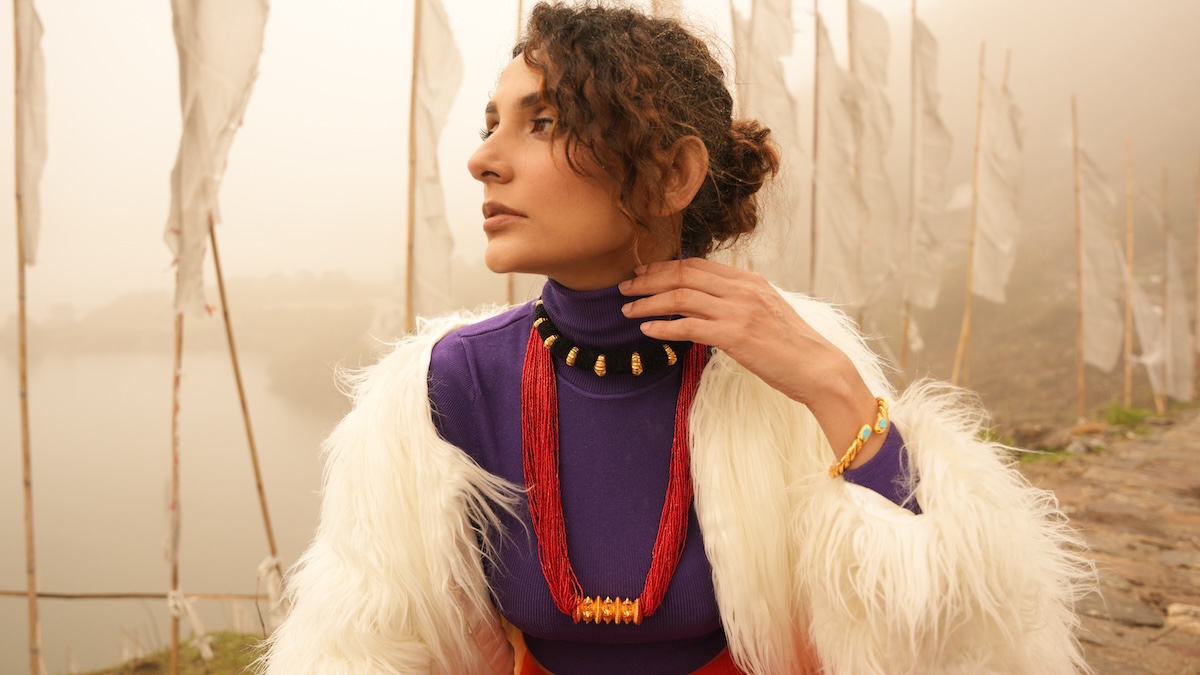
Exploring Sikkim's rich heritage: A glimpse into 5 types of Sikkimese gold jewellery
Sikkim, ‘The land of the thunder dragon’ boasts stunning scenery, beautiful mountains, and a rich, vibrant heritage. The state shares most of its traditions with our neighbours – Nepal, Tibet, and Bhutan resulting in a unique fusion of cultures. From folk dances to traditional clothing, food and more, Sikkim has a unique blend of enchanting culture that reflects in its jewellery.
To most jewellers from Sikkim, jewellery making isn’t just a profession; it's about the preservation of traditions. In some cases, families have been engaged in the art of jewellery-making for generations and each piece created is unique and a work of traditional art. Their ornaments tell a story and serve to keep their culture and craftsmanship alive.
Fascinating Sikkimese jewellery designs
The people of Sikkim are inspired by things found abundantly in nature, which are reflected in their jewellery. The jewellery is mostly made using 24 and 22 karat gold with precious gems like turquoise and red coral, readily available at these high-altitude regions, playing a significant role. Gold is considered sacred in some religions and thus, used widely in Sikkimese jewellery, whereas turquoise or red coral are believed to have protective qualities.
Here are five fascinating pieces of jewellery from Sikkim that embody the region’s traditions, culture, and stunning craftsmanship. They carry historical significance in their design, creation, and even the occasions they are worn.
1. Yencho Sikkim earrings
Due to Sikkim’s strategic location and its cultural mix, Yencho is a type of earring that originates from Bhutan and is mostly worn by Bhutia women. They are traditionally flat and circular. These earrings are symbolic and convey meaningful messages like grace, elegance, and good fortune.
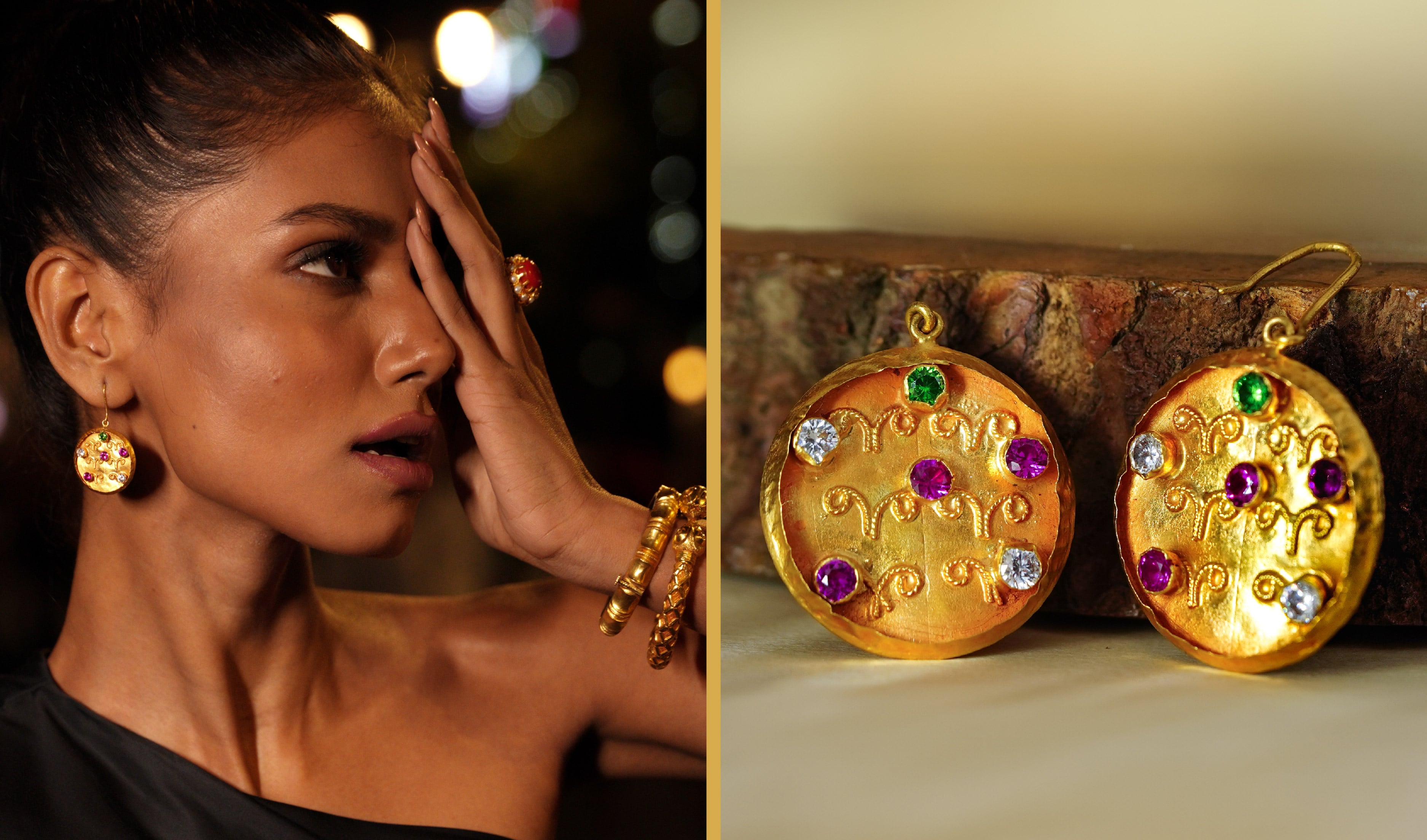 Yencho earrings
Yencho earrings
Yencho is a classic example of the exemplary craftsmanship of Sikkimese artisans. The earrings are usually made with gold (because of its malleability and sheen) and studded with turquoise and red coral stones. Artisans add filigree work with gold/silver wires to create intricate patterns and designs.
Yencho is typically worn at weddings, festivals, and various cultural performances. Women wear a traditional dress called a “Kho” which is a colourful, silk wraparound dress and often pair it up with Yencho earrings.
2. Khao Sikkim necklace (pendant)
Inspired by Bhutanese culture, the Khao pendant represents the faith of the Bhutanese people and symbolises the abstract representation of a mandala (meaning the circle of life). The pendant shape, whether circular or rectangular, symbolises the religious beliefs of Bhutia tribes.
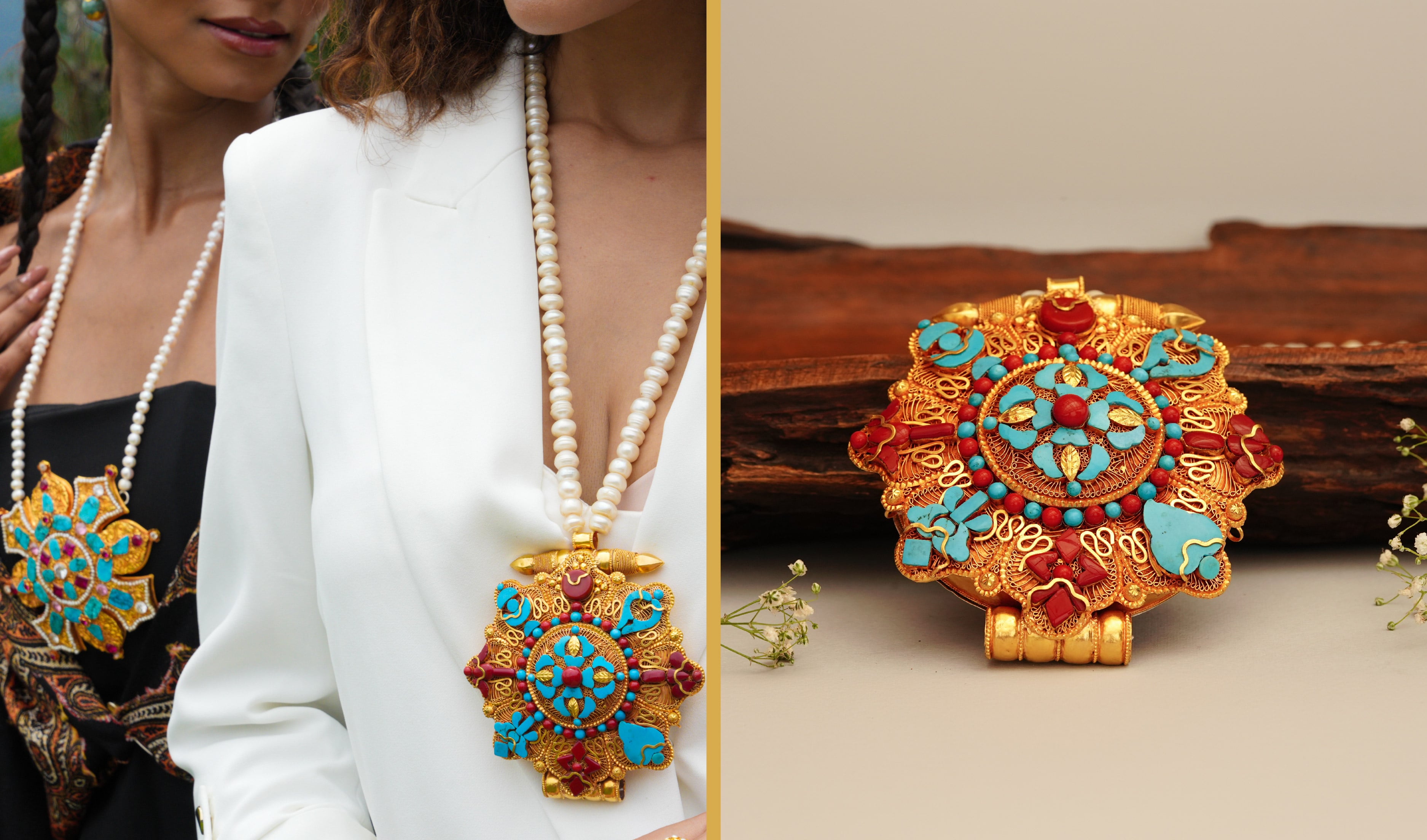 Khao pendant
Khao pendant
Khao pendants are symbols of prosperity and purity. Passed down for generations, they often signify a family’s heritage and are worn by married women, symbolising marital bliss. Once, it was an auspicious amulet box, but now it is believed to protect the bride from harm. Behind the intricate design sat a small box that used to house an amulet that would have been carried for various reasons – for prosperity, fertility, and even protection in war.
Crafted using gold and silver as the choice of metal based on preference and budget, the making involves designing and etching the pendant in all sizes, with detailed patterns and motifs. Precious gemstones like turquoise and red coral are used along with intricate filigree work. Some Khao pendants even feature enamel work that further creates a truly vibrant design.
The women pair up Khao pendants with ‘Dubyugchen,’ a wraparound dress made of woven fabric. These are generally worn or gifted during cultural events, especially weddings and are worn by married women.
3. Diu Sikkim bangles
Diu, a pair of chunky and heavy gold bangles traditionally worn by Sikkimese women, is a true art form. Although they originated in Nepal and incorporate all the aspects of the indigenous Bon religion in Sikkim, Diu is a mix of Bhutanese and Lepcha cultures that are believed to bring this craftsmanship with them from the Kham district of Tibet in the 14th century. In many families, these bangles are passed down through generations as heirlooms, preserving their legacy.
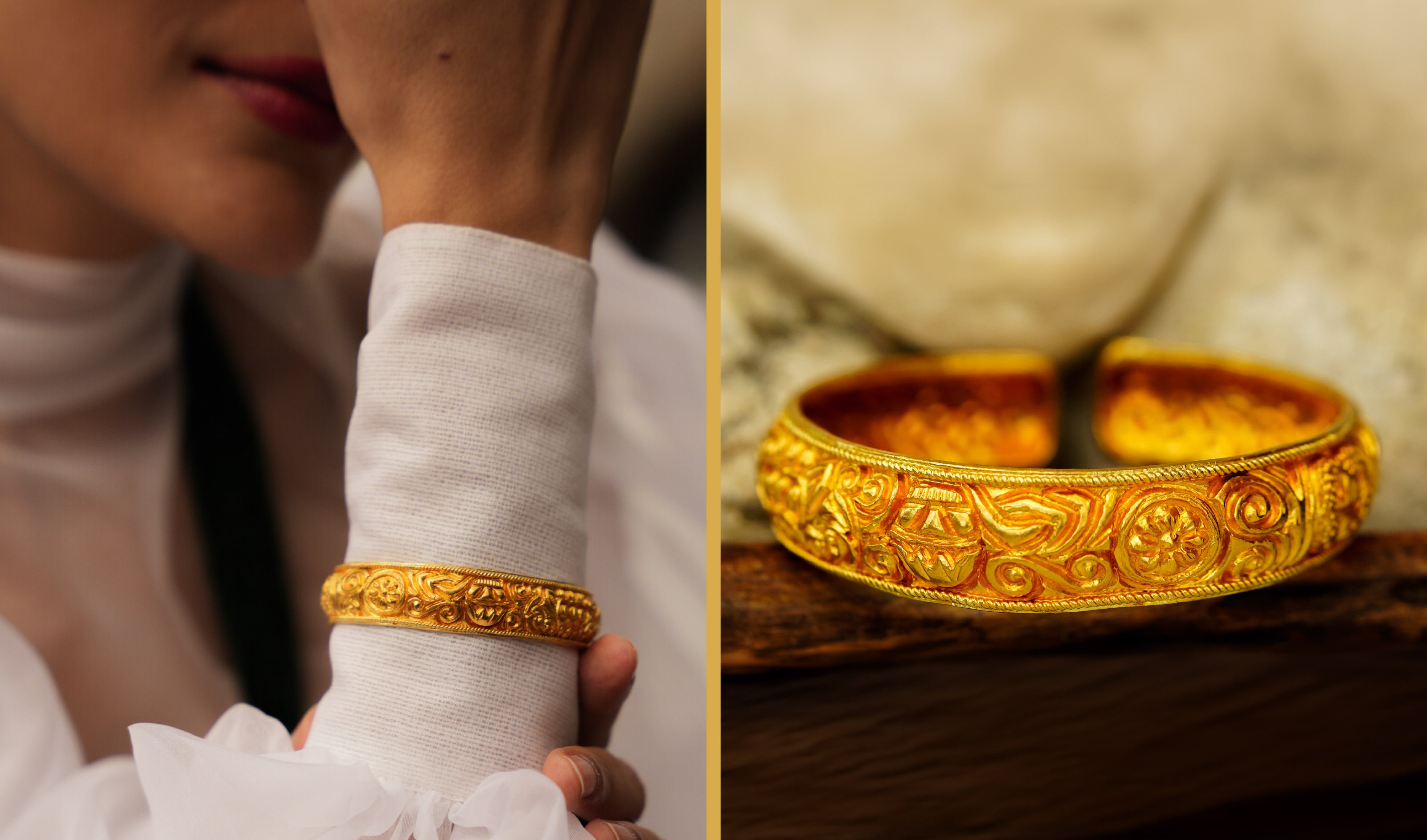 Diu (Gold Bangle)
Diu (Gold Bangle)
The making of Diu bangles is a complex process involving the melting of gold, shaping it into the circular form, and giving it a polish for lustre and durability. Artisans use various traditional techniques like forging and engraving. These gold bangles signify happiness in marriage, strength and prosperity and are often considered to be gifts of love.
The gold Diu bangles are worn on both wrists by the bride on the day of the marriage. Later, women wear it daily, to symbolise their marital status. Bhutia women wear a special dress like ‘Bakhu’ or Duguchen (for Lepcha women) and adorn their wrists with Diu bangles to complete the traditional look.
4. Joko (ring)
The Joko ring shares history with the Bhutanese culture and is a perfect product of cultural fusion. Men generally have no jewellery but can wear a Joko as an engagement ring.
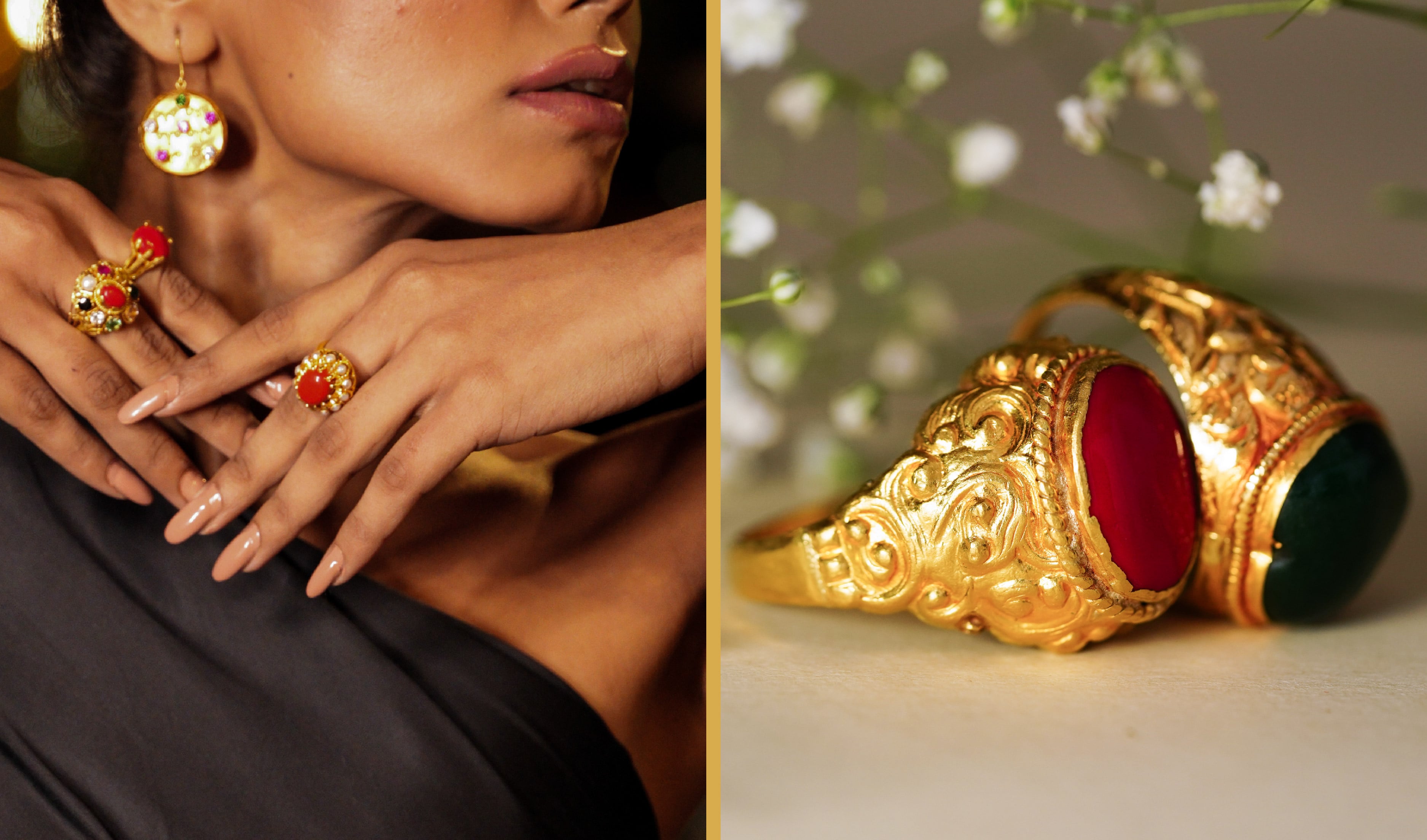 Joko rings
Joko rings
The rings are made of gold and are usually studded with a red coral or turquoise at the centre. You may find rings studded with other precious and semi-precious gemstones too. Artisans use methods like casting, carving, and engraving to make these pieces. They are crafted in a way that makes them comfortable and elegant, something to be worn every day.
The ring is a symbol of unity and commitment often exchanged between couples during weddings and engagements as a sign of love and affection for each other.
5. Kilip (head ornament)
Head ornaments called ‘Kilips’ or a clip are traditional bridal adornments. These are exquisite pieces that are crafted from gold and feature intricate nature-inspired designs, typically in the form of moon cycles – a full moon or crescent shapes, which is a particularly favoured motif. Designs etched or carved on the Kilip are nature-centric and the different shapes and designs are true renditions of Sikkimese symbolism.
Kilips hold special significance for enhancing a bride’s beauty on her wedding day. The detailed headpieces could be worn during cultural events and festivals.
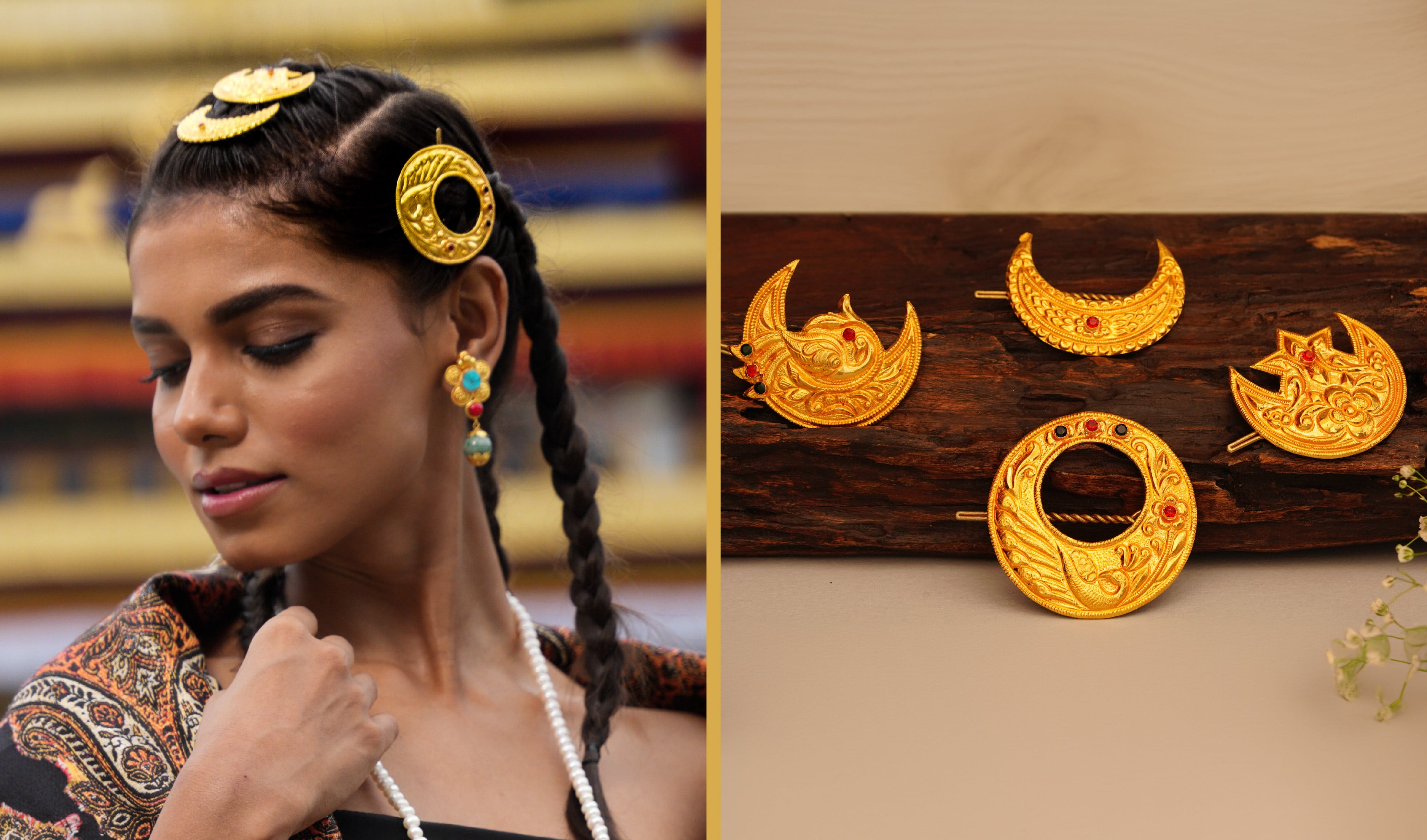 Kilip
Kilip
Other jewellery of Sikkim
Kantha, a gold neckpiece strung with red thread, is believed to carry ancestral blessings. After Sikkim's monarchy ended, artisans created smaller Kantha chokers, making them accessible to all. Nepalese wore it as a fashion statement.
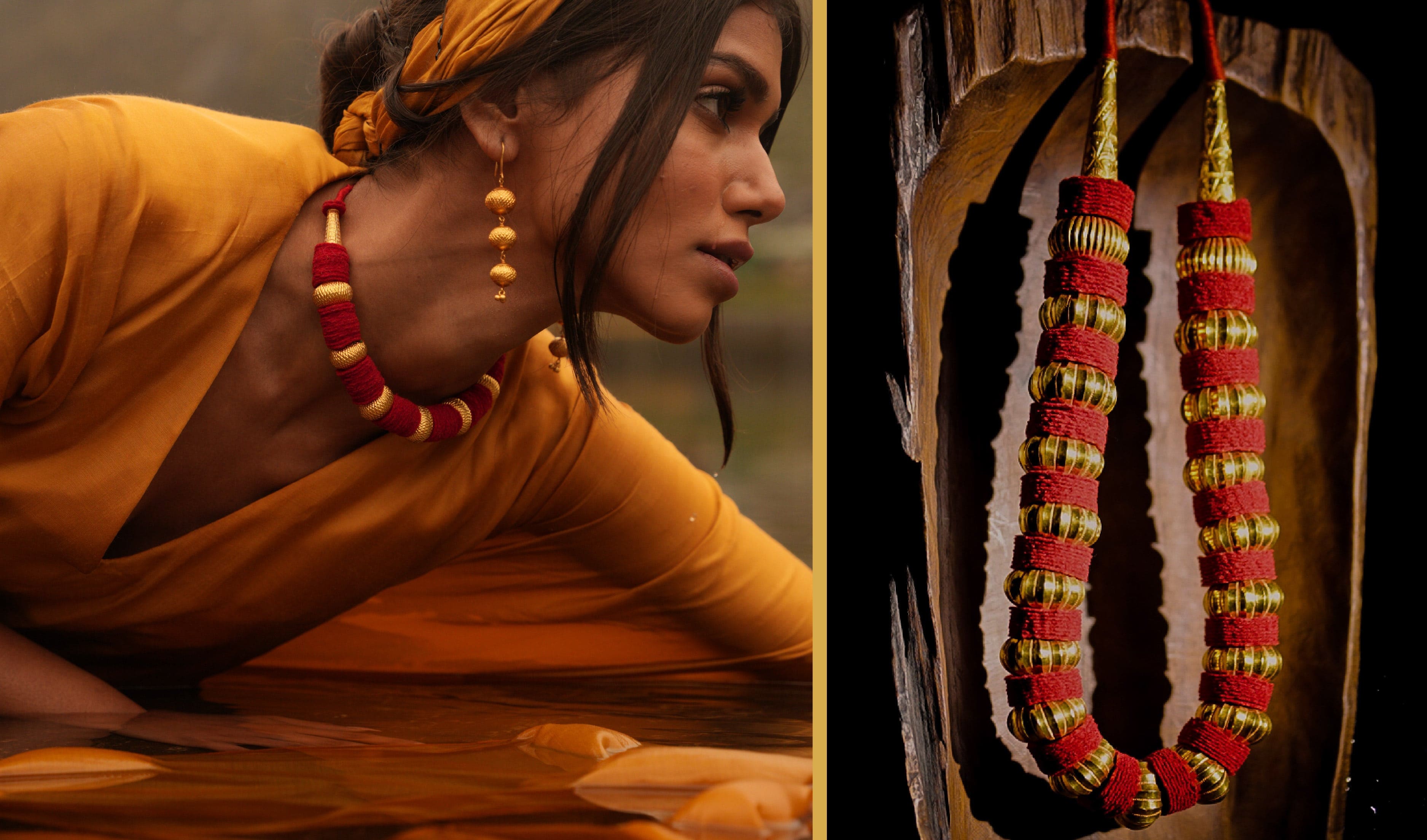 Kantha
Kantha
Naugedi, (Nau means nine, a number that is a strong symbol of cultural identity) is a traditional necklace made of nine braided gold threads, resembling the Rudraksha seed, and is worn by women desiring a husband with virtues like Lord Shiva.
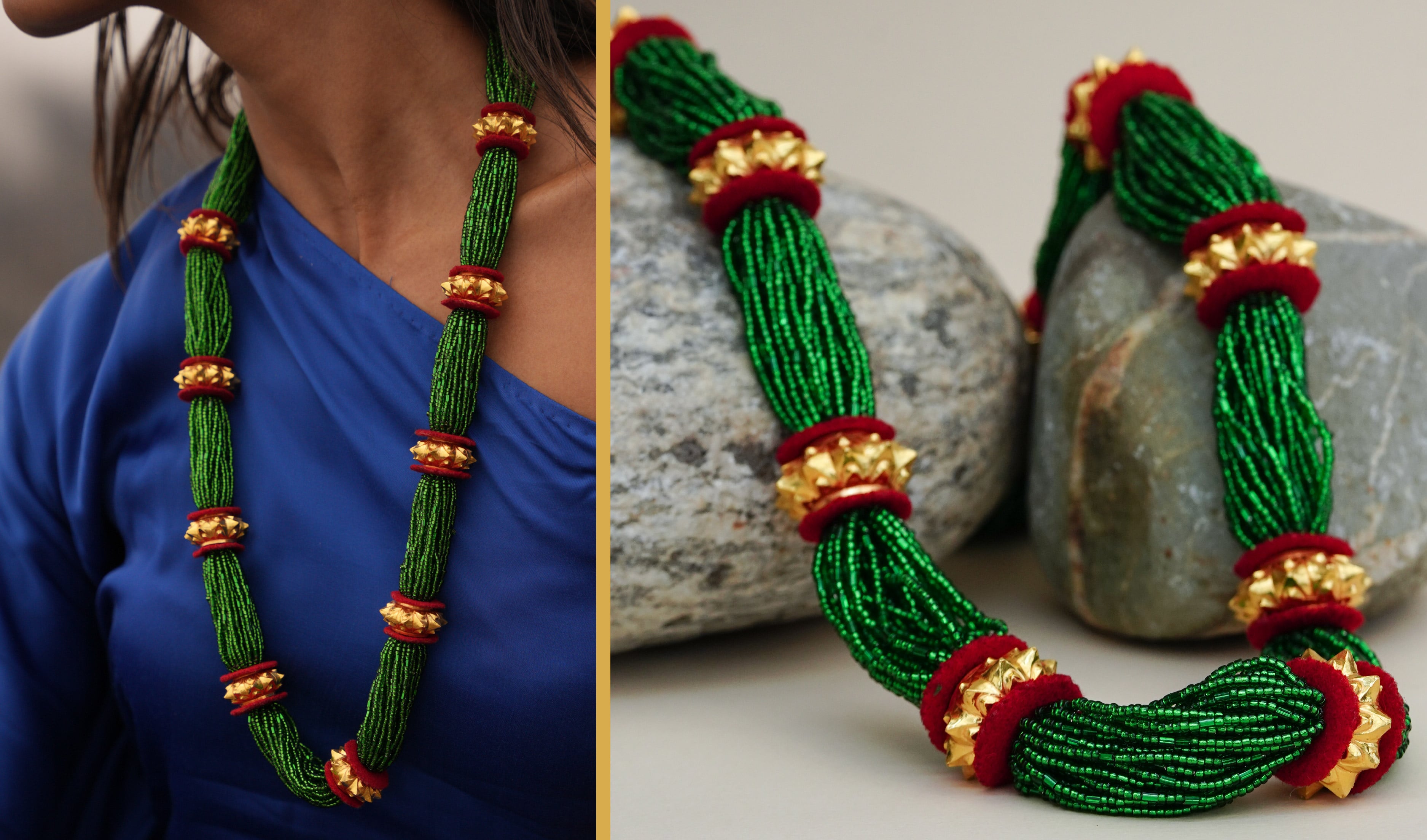 Naugedi
Naugedi
Tilhari is a long necklace adorned with red or green beads. On the wedding day, green beads are worn, while red beads are preferred after marriage. The pendant has seven grooves, symbolizing the days of the week and representing the continuity of life. It's spindle-shaped, representing life's cyclical form and stands for fertility, virility, and passion. The ribbed sections depict Rudraksha seeds.
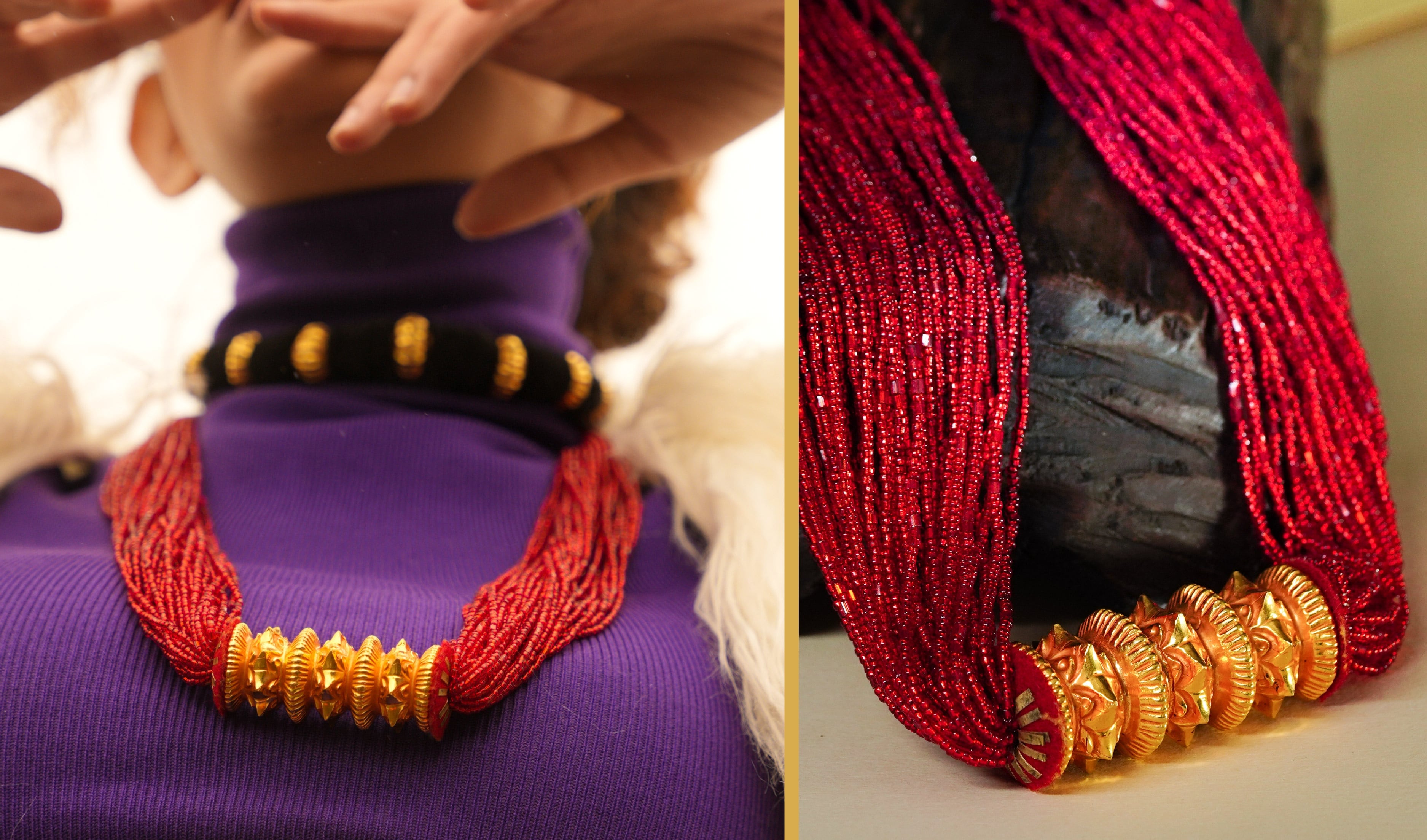 Tilhari
Tilhari
Nepalese jewellery includes Sir-Bandi, Tikmala, Bulaki, and Dungri. These ornaments are worn by married women daily and for cultural events.
Sikkimese jewellery is an exemplary example of cultural fusion and tradition and what the people of Sikkim believe in. Every ornament has a story to tell, with its own cultural identity carrying its significance. The artisans' heritage and craftsmanship highlight just how much of their history goes into making each piece. Exploring these fascinating pieces can be an enriching experience for anyone.
